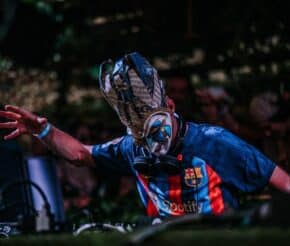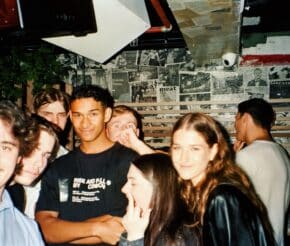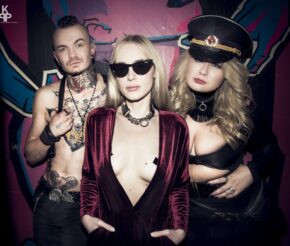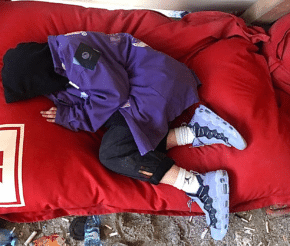- Advertise
-
Subscribe
How LGBT+ Communities Spearheaded Drug Trends
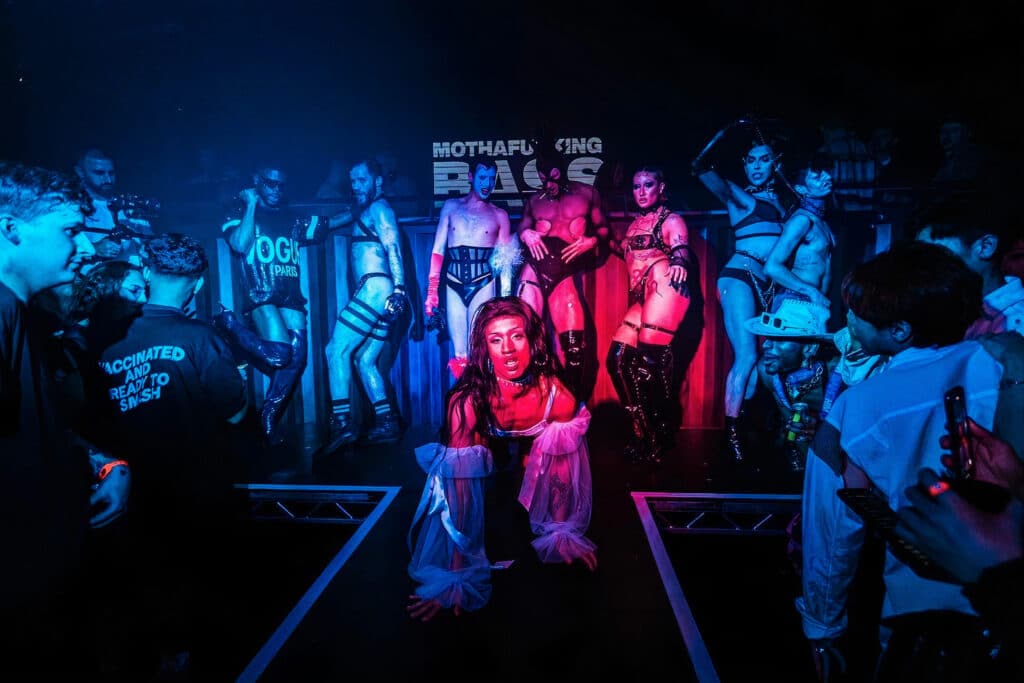
Back when everybody believed MDMA’s dreamy euphoria and CK1’s rapturous boost were a 2000s byproduct of white men, LGBT+ communities were busy turning the clubbing scene into a massive drug-fuelled trampoline.
As first-hand adopters of mind-altering substances, queer drug users brought powders, pills, and bottled liquids to queer clubs’ intimate booths with one mission – to shake off society’s crushing oppressive pressures.
In a domino effect, those drug trends transcended gay sanctuaries and bled into the mainstream, making straight clubbers fall in love with the highs of MDMA, poppers, and ketamine.
But LGBT+ communities are more than just your average drug types trailblazers – along the way, they set sail for a clubbing era where after-hours hedonism, woozy house beats, and hopped-up highs reigned supreme.
You can thank black LGBT+ community for techno beats
As the disco hangover fizzled out and Studio 54’s doors closed after serving 33 months of drug-fuelled decadence, the spell-binding techno rose from the ashes of the glitter-soaked era. Besides steering UK’s illegal rave scene symphony and reshaping the sound of Berlin’s clubbing meccas, the bullet-hard beat created a greedy thirst for synthesized drugs.
In Detroit’s nightlife realm – also dubbed as the birthplace of the house music fever – amphetamines, ecstasy pills, and crystal meth were customary leitmotifs. One might believe that white cis clubbers were responsible for bringing those hypnotic highs to the table.
Back in the roaring 80s, unapologetic queerness was ever-present – in the sweaty clubbing crowds, DJ booths, and warehouse sounds
On the contrary – the house movement and mind-altering substances that tagged along were a product of black gay communities.
With its energetic beats and immersive vibe, the techno genre was a one-of-a-kind sound that had never reached music lovers’ ears before. At that time, MDMA was leaking out of therapists’ offices and made its first-ever appearance on the electronic scene.
The co-evolution between molly and house was no fluke. Besides being popular simultaneously, ecstasy’s feverish energy was everything that EDM’s repetitive beats needed. And just like that, ecstasy pills and MDMA powders morphed into staple party drugs.
Back in the roaring 80s, unapologetic queerness was ever-present – in the sweaty clubbing crowds, DJ booths, and warehouse sounds.
Throughout the decade, electronic music figurehead Juan Atinks paved the way for fresh, raw and heart-racing beats by sampling electronic sounds. While the Afro-American DJ was not part of the queer community, his muse was.
Drawing inspiration from Chicago’s house groove – also known as gay house music – Atkins crystalised a bass-driven anthem that spawned a drug-fuelled craze.
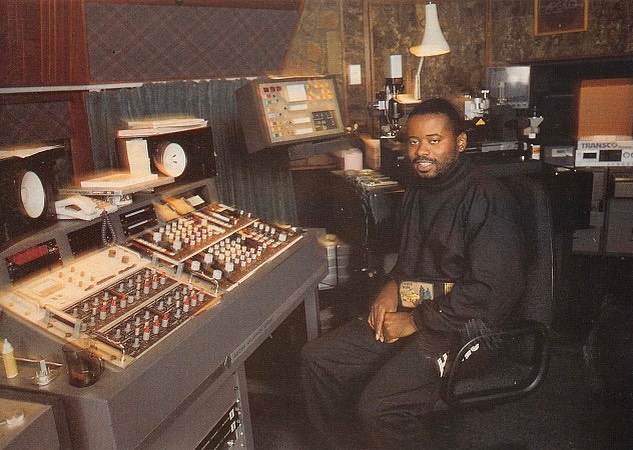
Whether we’re listening to David Bowie’s Panic in Detroit or taking a peek at The Velvet Underground’s gender-bending ethos, Mototown’s electronic tale revolves around black queer men. Every weekend, those communities flocked to industrial warehouses until the wee hours of the morning to create what we know today as modern techno music.
Behind the audio decks, there was even more queerness
On those sweat-drenched dance floors, LGBT+ party animals used synthetic highs to gain a sense of self-identity, bond with their sexual uniqueness and pleasure each other.
Behind the audio decks, there was even more queerness. House godfather Frankie Knuckles called the tune for these hedonistic clubbing sessions with his cutting-edge DJing skills. He was openly gay.
The same goes for founding techno father Ken Collier, who jazzed it up with a progressive touch by bridging the 70s’ disco with Detroit’s mechanical vibration.
The after-hours movement
With white towels slung around their necks, these techno trailblazers spun the decks in Detroit’s late-night joints. Back in that day, the after-hours clubbing practice was an alien concept. But when mainstream clubs turned on the lights at 2 AM, membership-only gay clubs took over the throne with their ‘open until late morning’ mantra.
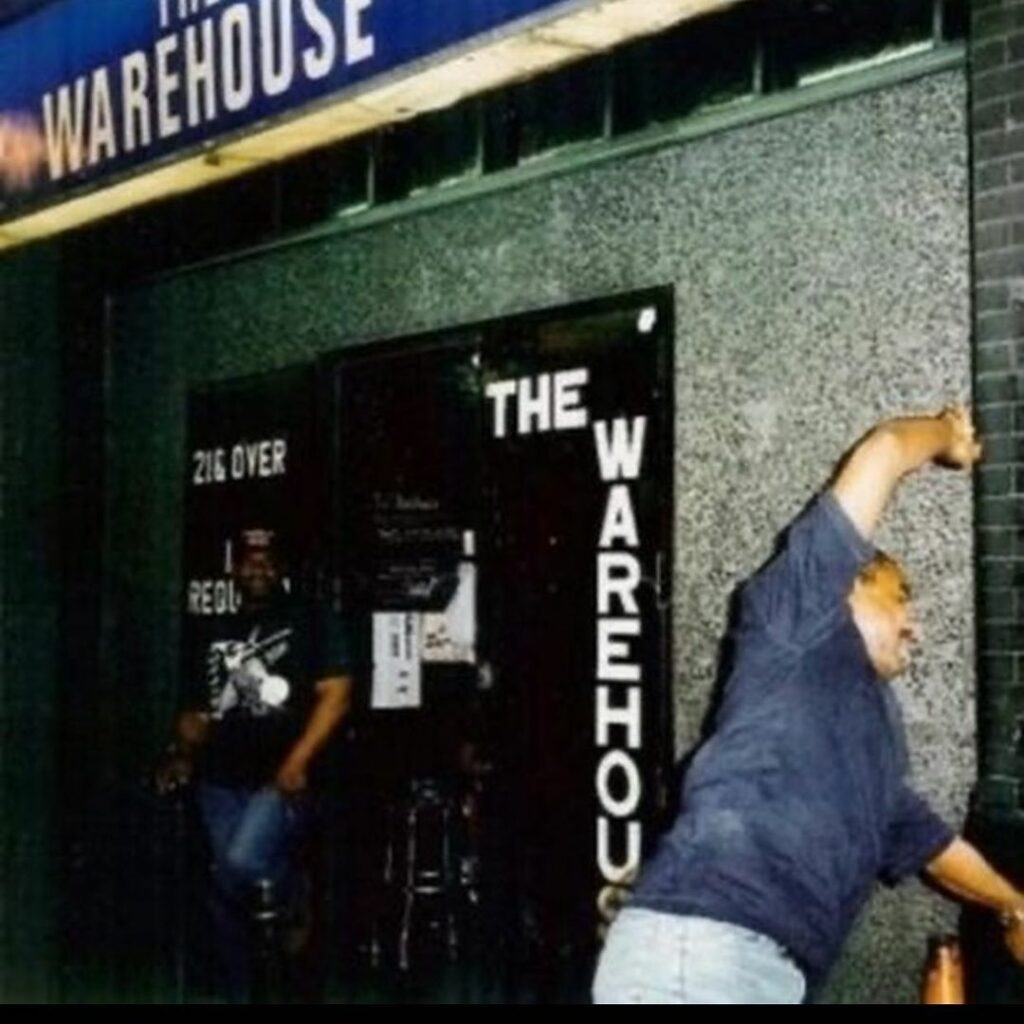
During Detroit’s electronic golden years, after-hours clubs like Elmwood Casino and The Warehouse morphed into staple gay havens.
In the LGBT+ communities, late-night venues were labeled as places of liberation, self-expression and drug consumption due to their immersive queer culture.
Those seedy, warehouse-style clubbing destinations were the only shelter away from the police raid bombardments (often without a warrant) that terrorised gay collectives.
There are two ways of surviving a drawn-out rave – you either show up late or take drugs. If you go for the latter, stimulants like cocaine and amphetamines will keep your eyes open long after the rave is done and dusted with their 12-double-espressos effect.
While ecstasy kept its throne throughout the after-hours movement, mephedrone, cocaine and speed enjoyed a soaring popularity at impromptu warehouse parties and queer nightclubs. Snorting stimulants was more of a must than a fluke since empty baggies scattered the dancefloor as much as water bottles did.
Ecstasy-related drugs trickled down from the scruffy warehouses to the UK’s hedonistic rave scene, but so did the after-hours concept
Besides embracing the free-spirited culture that went hand in hand with electronic beats, gay nightclub The Warehouse also contributed to house music’s identity. Its fearless, go-getting soundtrack gave birth to a chain of Chicago record stores that put dance mixes on a pedestal.
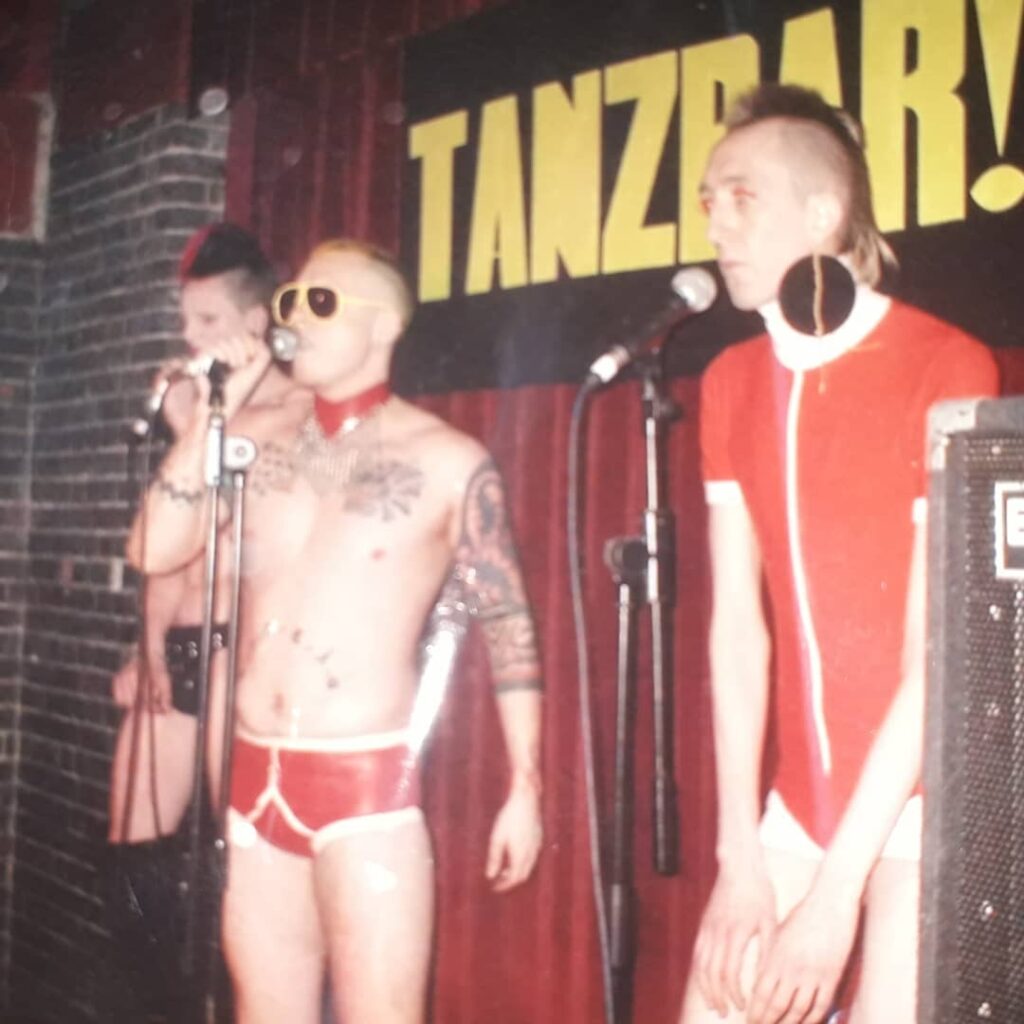
They played and labeled them “as played at The Warehouse” – which was soon colloquially shortened to house music. Voilà, the groovy beat finally had a name.
Ecstasy-related drugs trickled down from the scruffy warehouses to the UK’s hedonistic rave scene, but so did the after-hours concept.
Sharing the same decadent ethos, London LGBT+ nightclub Trade was the first British music mecca to be blessed with a 24-hour license.
Through this first legal carry-on nightlife haven, Europe went head over heels for the all-night clubbing habit in the 1990s.
Surfing on the chemsex wave
After-hours nightclubs were impenetrable sanctuaries where MDMA-soaked house beats were some type of religion. They were the inevitable result of the drug-taking lust that characterized LGBT+ communities.
Along with GHB, mephedrone, and crack cocaine, queer revelers snorted ketamine lines to take the edge off during sex sessions
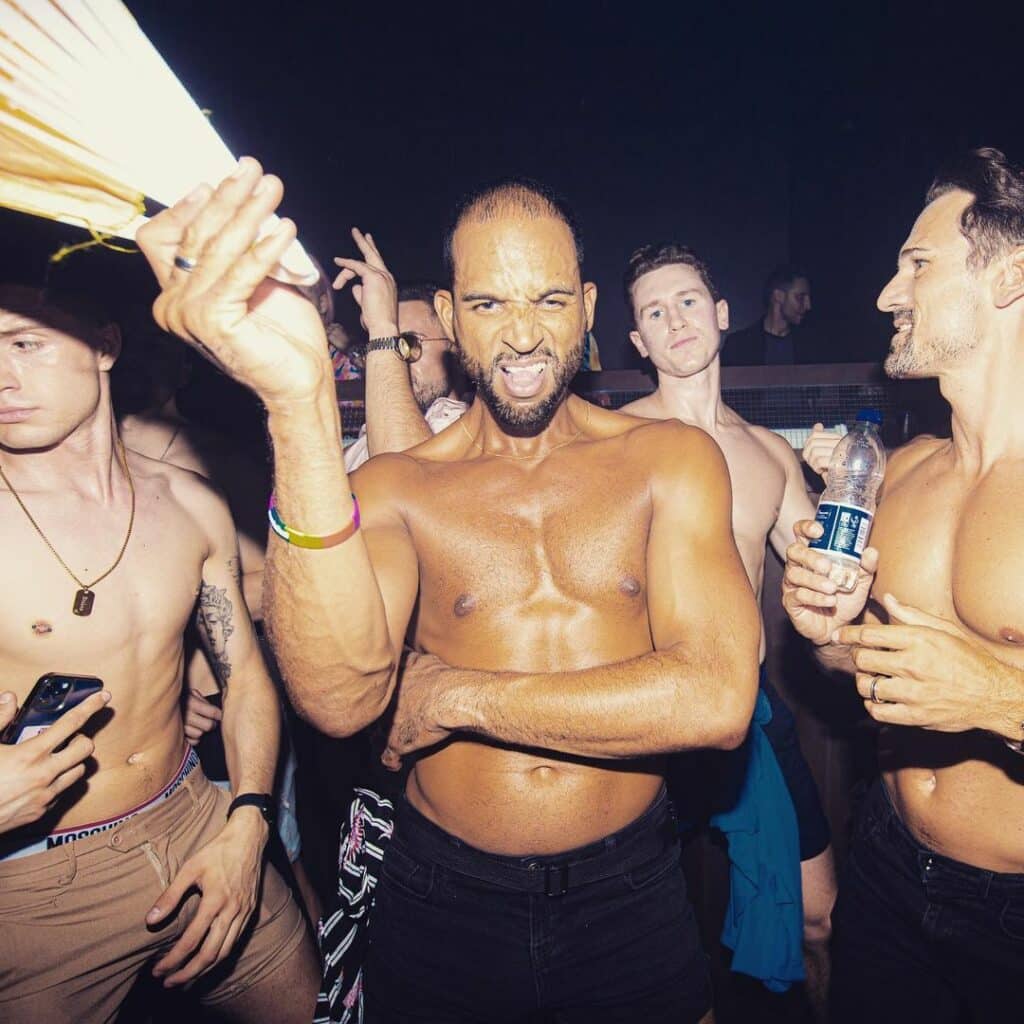
But those seemingly endless pleasure-seeking sessions were similar to running a marathon – if you wanted to reach the finish line, you either needed a booster or jaw-dropping rave stamina.
So LGBT+ clubbers brought ‘special K’ to the scene in the late 1990s.
Used as horse tranquiliser in veterinary circles and anesthetic on the battlefield, the hallucinogenic ketamine found a new purpose in the chemsex kingdom.
Along with GHB, mephedrone, and crack cocaine, queer revelers snorted ketamine lines to take the edge off during sex sessions.
Although chemsex was a mere twinkle in the queer drug-using community back in the day, this sexual liberation propagated the CK1 trend.
Similar to the speedball concoction, this slang translates into the partnership between cocaine and ketamine. And the drug trend didn’t pass unnoticed – on the contrary. In no time, it became a British clubbing staple and surfed on Ibiza’s trance wave.
To this day, “getting ketty” is as deeply-ingrained in the British clubbing scene as downing six pints before a football match is. Its evergreen popularity was best potrayed in 2019, when Home Office figures revealed that the number of police ketamine confiscations increased by 30% compared to the previous year.
Once a fixture at gay clubs, now a raving must
Mainstream clubbers developed a soft spot for MDMA’s temporary euphoria and ketamine’s funky feel – so much that they didn’t have to filter them into the mainstream because they had their arms open already. Fast forward to today, they continue to do so.
All is fair in love and drugs, so if the hunt for fresh highs means converting to poppers’ instant head-rush, then so be it
As a fresh generation of aspiring ‘it’ girls and ketamine-chic lads take over the raving scene’s helm, the lid hiding a new set of experimental drugs is bashfully lifting.
All is fair in love and drugs, so if the hunt for fresh highs means converting to poppers’ instant head-rush, then so be it. Deeply-ingrained in queer culture, these bottled aphrodisiacs made the jump from gay clubbing destinations to rich kids’ private parties and mainstream nightlife venues.
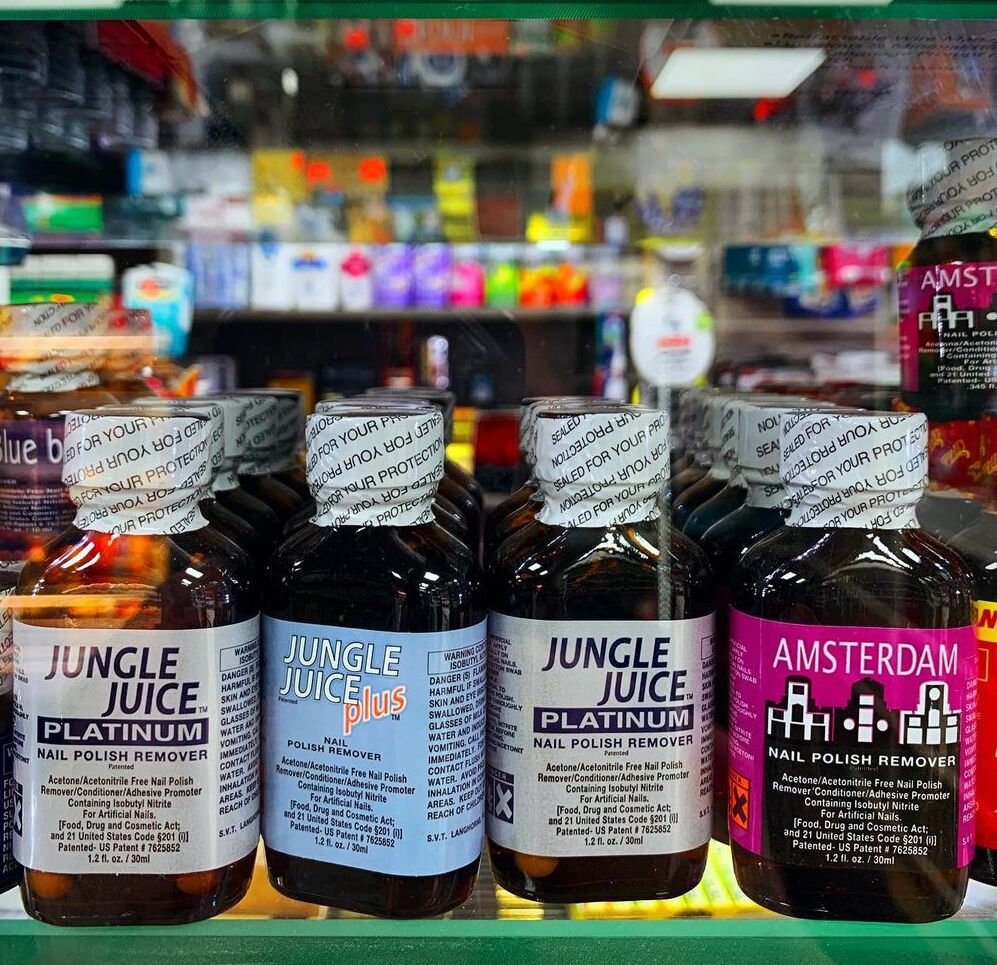
Those disco-era inhalants now get passed around at raves, pre-drinking sessions, and early morning afters.
But the first dance floors that got scattered with spilled bottles of alkyl nitrate belonged to queer sanctuaries.
Back in the 70s’, poppers’ pungent chemical smell was a native aroma in gay nightlife venues. With one inhale, this liquid incense gives a short-lived buzz and complete muscle relaxation.
If their soaring popularity had been negligible, then maybe UK’s Conservative Party wouldn’t have tried to ban poppers from the legal highs league
Thanks to the latter, poppers morphed from heart condition medicine to a dominant facet in LGBT+ sex-related nightlife. By dilating blood vessels, the stinging scent enhanced anal penetration and created fulfilling sexual experiences.

Now, this gay life relic enjoys widespread adoption in mainstream culture – and it is far from being your average 15 minutes of fame.
If their soaring popularity had been negligible, then maybe UK’s Conservative Party wouldn’t have tried to ban poppers from the legal highs league.
Somewhere down the road, the electronic movement, psychoactive substances, and after-hours concept experienced a partisan whitewashing.
The truth is that within LGBT+ communities, drugs have been used as the go-to analgesic to numb the pain of societal oppression.
It’s similar to how straight people consume psychedelics in pursuing their eureka moment.
Historically, gay individuals have always been at the whim and approval of heteronormative policymakers. But they fought back
Those drug-taking tendencies still linger today. According to National Institute on Drug Abuse figures, queer communities are twice as likely to use drugs compared to hetero individuals.
Historically, gay individuals have always been at the whim and approval of heteronormative policymakers. But they fought back. Driven by the ‘velvet rage’, queer folks sought shelter from the barbaric oppression and narrow-minded bigotry.
Their luster-after safe space translated into nightlife laboratories where house beats, illicit drugs and hedonistic sex intertwined – a space that sooner or later filtered in the white, straight clubbing scene as if it was a Fashion Week trend.
